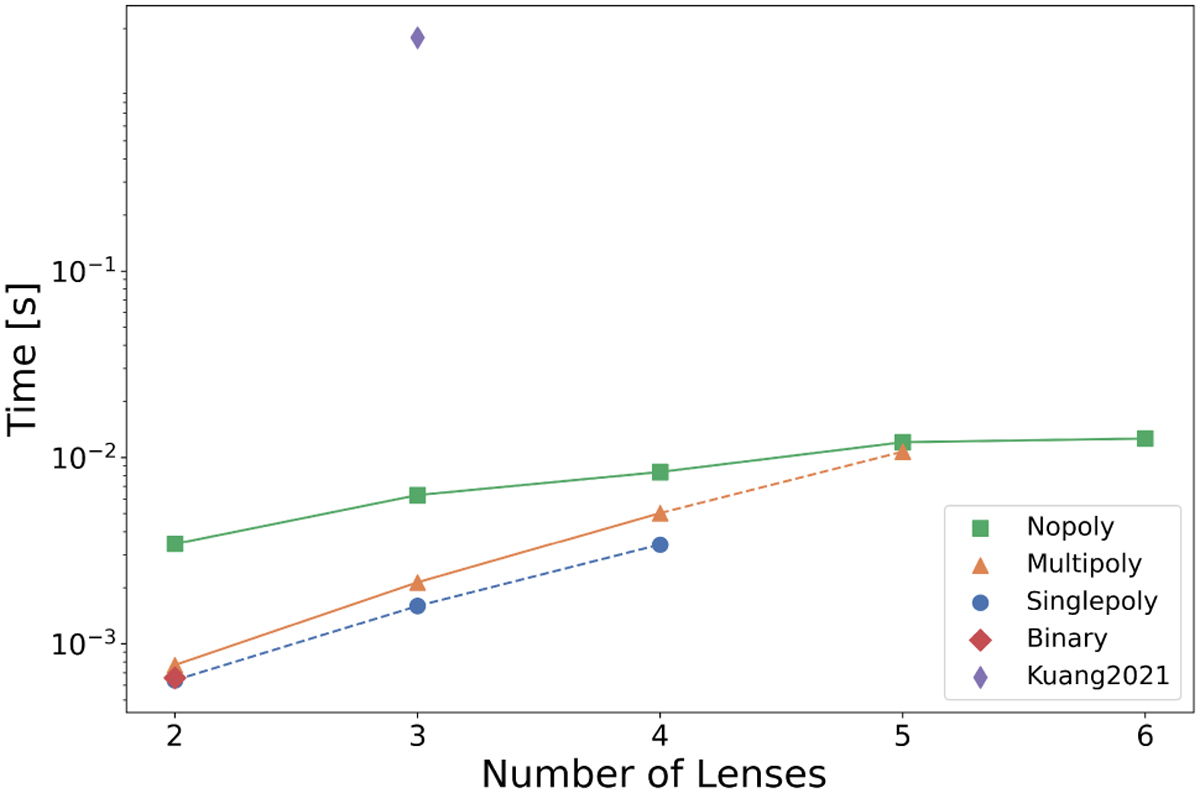Fig. 9

Download original image
Comparison of the three algorithms, Singlepoly, Multipoly, and Nopoly, as the number of lenses in the system varies. The analysis includes VBBinaryLensing for binary lenses and the triplelens code published by Kuang et al. (2021). The time estimates were based on calculations across all source positions for lens configurations producing a magnification of 20 ± 5. The computations were repeated for four different configurations, and the average times obtained were then used as data. In the case of binary lenses, VBBinaryLensing remains the most performant code. For triple lenses Singlepoly is the most efficient, but is affected by numerical precision issues. The dashed lines indicate that beyond that number of lenses, the algorithm’s reliability decreases. Therefore, the preferred choice is Multipoly, which is slightly slower but more reliable. As the number of lenses increases, Multipoly significantly degrades in performance, making Nopoly the reference code.
Current usage metrics show cumulative count of Article Views (full-text article views including HTML views, PDF and ePub downloads, according to the available data) and Abstracts Views on Vision4Press platform.
Data correspond to usage on the plateform after 2015. The current usage metrics is available 48-96 hours after online publication and is updated daily on week days.
Initial download of the metrics may take a while.


